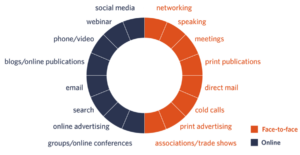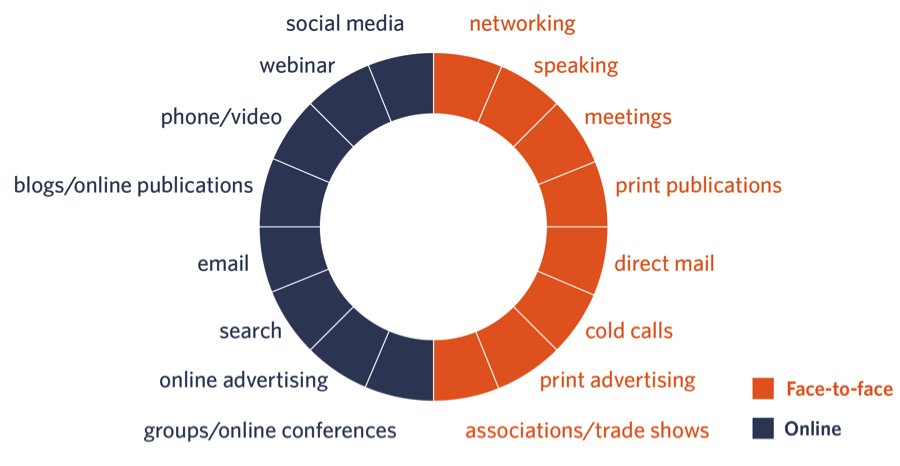 You can start implementing some simple steps for local marketing right away. Here are a few quick and easy suggestions to boost local marketing for your company.
You can start implementing some simple steps for local marketing right away. Here are a few quick and easy suggestions to boost local marketing for your company.
- Improve your website (and Localise it).
However, is your website optimised for local users? Website optimisation is essential for increasing traffic. According to Heather Lodge, chief marketing at Click and Mortar, not only should you adhere to search engine optimisation (SEO) best practises, such as using keyword research to inform your website content, but you need also make sure that your website offers a superior mobile experience.
More than half of website traffic, according to her, originates from mobile devices. “You’ll have an easier time attracting local business if you have a website that’s nice and streamlined, with large text to read on a small screen and huge buttons to simply click.”
Your website should be localised in addition to these suggestions, which are essential for any digital marketing strategy, according to Lodge. Consequently, you should choose your keywords and key phrases based on local SEO. To do this, consider what the local market is searching for on Google. As a general rule, mention your community or adjacent communities regularly. Consider including terms on your website like “serving the tri-state area” if you’re aiming to reach a local audience.
By using free keyword research tools like Google Analytics, Google Trends, and Google Search Console to determine precisely which local terms you should use, you may further enhance your understanding of local SEO. Local customers are more likely to visit your website when it is optimised for local search.
- Update the meta descriptions and title tags.
Another SEO factor to think about is if your website’s title tags and metadata are current.
The bulk of people simply need to be concerned with the meta description and title tag, he added, adding that there are a few other sections of information.
On the search engine results page, the title tag is the 60 characters that users view (SERP). The ideal title tag, should be less than 60 characters long and related to your business and area.
The meta description is less likely to affect search ranking, but it can increase click-through rates by clearly indicating to users what kind of information they might find on the webpage.
According to data, a good meta description can increase click-through rates. On the other hand, having a phone number in the meta description is crucial for a company like a restaurant that wants customers to contact, “Meta descriptions should never be longer than 160 characters.”
- Create neighbourhood landing pages for each of your company’s locations.
If your company has many locations, you should make a page specifically for each one on your website to aid in localisation.
Companies with numerous locations sometimes neglect to provide pages on their website with details about various locations, according to Lodge. “These websites ought to list each location, transportation information, and store hours.”
Lodge noted that the specific information about your company should be included on these sites. For instance, a Nashville, Tennessee-based real estate agent shouldn’t simply state on their website that they are a “real estate agent.” Instead, adding the keyword phrase “leading real estate agent in Nashville” informs search engines of the agent’s location and aids in serving local search results to users in the area. It also addresses how individuals are searching for real estate agents; they don’t simply want anyone, they want “the best” or “leading” real estate agents.
- Claim your Google My Business listing.
Claiming your Google My Business listing is one of the simplest and most effective local marketing methods you can start using right away. Search engine users can access information from Google My Business immediately on the SERP, including your location, store hours, directions, contact details, and more.
“Claim your Google My Business knowledge panel and make sure that it is updated,” “Especially during COVID-19, make sure it reflects current store hours and clearly describes any restrictions, such as takeout or delivery only.”
- Make social media pages optimised.
In terms of local web marketing, social media marketing is really crucial. Your social media pages should be optimised and localised, much like your website. This entails giving current information, such as your company’s address, phone number, and store hours. Additionally, it entails keeping a lively social media presence. Social media posts can be scheduled using applications like Hootsuite.
From a small company standpoint, social media primarily revolves around communicating about specials, reopenings, or promotions. It’s mostly about reputation management, she said.
- Promote positive user feedback and interaction online.
Encourage your pleased clients to recommend you online on sites like Google Reviews, Facebook, Yelp, and other places. You could even offer them discounts or promotions, like a raffle or giveaway, to entice them to leave favourable reviews.
- Host or sponsor local community events.
While digital marketing is great, creating a physical connection between your audience and your company is invaluable. Whenever it’s feasible, think about producing or supporting a neighbourhood event to raise your brand’s presence there. This is also a terrific method to get local news coverage, which increases the likelihood that a local audience will find you online.
- Make use of targeted email marketing.
Among many of the marketing tactics at your disposal, email marketing strategies have some of the lowest prices. The majority of the expense is related to gathering useful email addresses. Although there is nothing in an email address that can tell you where a person is situated, you may start employing email-gathering strategies to filter users based on location. The simplest method is to put a sign-up sheet in your shop, ideally by the register, or at booths or events you sponsor, so interested customers can see it and sign up to receive news and offers from you.
- Try a mail-out campaign.
Contrary to popular belief, reaching customers through direct mail is much less expensive. By forgoing mailing lists and expert targeting, you can recoup your stamp expenditure. By looking at neighbourhoods where the demographics of your target audience are present, you can usually target prime demographics.
- Collaborate with other nearby companies.
Collaboration with other companies can be an effective strategy. These partnerships increase the overall reach of both businesses. Finding companies with comparable beliefs and objectives (and who don’t immediately compete with your firm) is the key to making this work.
You can co-sponsor events with your corporate partners, for instance. You can collaborate with your SEO content to achieve a win-win situation. You can link to each other as well, and if these tactics are used, every outreach effort you do will be multiplied by the efforts of your business partners.
- Target localised ads.
Ads can be filtered by location and IP by advertising groups. Local users can be the focus of ads, and Google, Facebook, and other online advertisers make use of this functionality.
Localized paid advertisements continue to be helpful outside of internet advertising. Some of the finest ways to market your brand to local customers are local sponsorships, local newspapers, radio ads, coupon books, and movie theatres.
Key takeaway: You can make it simpler for locals to find your business by include geographical information on your website and social media profiles, keeping your Google and Yelp listings up to date, and other methods.

